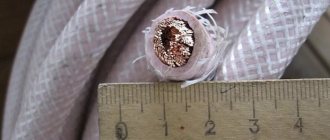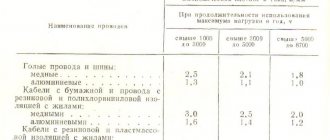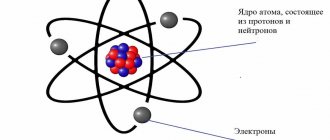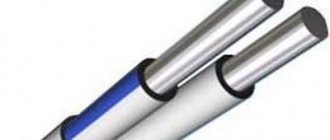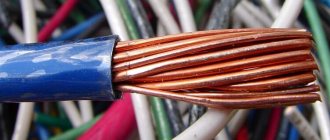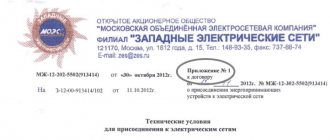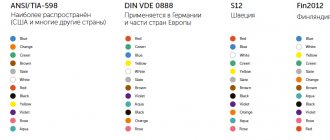4.2
Average rating: 4.2
Total ratings received: 86.
4.2
Average rating: 4.2
Total ratings received: 86.
One of the properties of electric current is the heating of the conductors through which it flows. This effect was noticed by many researchers, but its understanding came only after elucidating the mechanism of interaction of charged particles with atoms and molecules of conductors. Heating causes the release of heat and an increase in temperature, and the amount of heat released can be calculated using the Joule-Lenz law formula.
Why do conductors heat up?
Electric current is the ordered movement of charged particles. In conductors, these particles are negatively charged electrons. The effect of an electric field imparts additional kinetic energy to electrons. As they move, they collide with atoms (or molecules) of the conductor, releasing part of the acquired energy. For this reason, the internal energy of the substance begins to increase, which leads to an increase in temperature and the release of heat.
Rice. 1. Electric current in a conductor heats the conductor
If you take an ordinary incandescent light bulb and connect it to a voltage source through a rheostat (variable resistance), you can observe the thermal effect from the flow of current. By gradually increasing the current, we can first feel by touch that the glass bulb of the light bulb will gradually begin to heat up, and then we will see how the red-hot filament begins to glow.
Note that in this experiment the lead wires do not heat up much and do not glow. This happens because the resistance of the filament is much greater than the resistance of the lead wires.
§ 5.1. Maximum permissible heating temperatures of wires and cables
Electric current causes the wires to heat up. The amount of heat released in this case is proportional to the square of the current, the active resistance of the conductor and the time of current flow: (5.1) where Q is the amount of heat, J; I - current, a; R - active resistance of the wire, ohm: t - time, sec. When heat is released, the temperature of the wire will begin to exceed the ambient temperature. Due to the temperature difference, part of the heat generated in the wire is transferred to the environment. The increase in temperature of the wire will continue until thermal equilibrium occurs, i.e., the moment when the amount of heat that the wire receives per unit time becomes equal to the amount of heat that is given off to the environment in the same period of time. In this case, the temperature of the wire will stop increasing. The temperature at which thermal equilibrium occurs is called steady state. The greater the current, the higher the established temperature. This value of long-term flowing current under constant external conditions (ambient temperature, wind force, precipitation) corresponds to a well-defined steady-state temperature of the wire. In practice, they often use not the value of absolute temperature, but the value of overheating temperature, which is equal to the difference between the temperature of the wire and the environment: (5-2) Excessively high temperature of wires leads to premature drying and aging of the insulation, and for bare wires - to deterioration of contact connections over time. due to intense oxidation (significant increase in transient resistance). In addition, overheating of wires beyond permissible values poses a serious danger (possible fire). PUE establish the following maximum long-term permissible temperatures of wires and cables at which their reliable operation is ensured: For wires with rubber or polyvinyl chloride insulation, cords with rubber insulation and cables in a lead or polyvinyl chloride sheath with rubber insulation ... 65 ° C For cables with paper insulation in lead or aluminum sheath for network voltage: up to 3 kV 80° C up to 6 kV 65° C up to 10 kV 60° C 20 and 35 kV .. 50° C For bare wires .. 70° C
The temperature of the conductor at a given current value does not reach its steady-state value instantly, but after some time after switching on. The law of changes in the temperature values of wire overheating by current can be expressed by the following formula:
t—time, sec; e is the base of natural logarithms (e = 2.71); T is the heating time constant, i.e., the time during which the wire would reach steady-state overheating if there were no heat transfer to the environment (numerically, the time constant is equal to the ratio of the heat capacity of the wire to the heat transfer). When the wire is disconnected from the network, it cools down to ambient temperature. This process can be expressed by equation (5.4) In Fig. 5.1, a and b show the heating and cooling curves of the conductor τ = f(t). The heating time constants depend on the type of wiring, material, cross-section and insulation of the conductor. They are determined experimentally. From expression (5.3) you can easily determine the amount of overheating achieved after a certain time. The given formulas also allow us to solve the problem of how long it will take for the overheating of the conductor to reach a given value.
Under variable load, when it is necessary to determine the overheating temperature starting from a certain value τ, you can use an artificial technique in which the heating process is considered as the sum of two processes:
Pros and cons of electric heating
- Pros . Heating of conductors with electric current finds its application in various useful appliances and devices: electric stoves, kettles, coffee makers, boilers, hair dryers, irons, heaters.
- Minuses . Very often, electronics engineers have to deal with this effect in order, for example, to ensure the functionality of electronic boards, which are stuffed with a huge number of electronic parts, microcircuits, etc. All these elements heat up in accordance with the Joule-Lenz law. And if measures are not taken for forced cooling using metal radiators or fans (coolers), then the boards will quickly fail from overheating.
Rice.
2. Household heating appliances: kettle, iron, hair dryer, electric stove. Often, to quickly connect wires, many people use the “twisting” method. This leads to a significant increase in resistance, and therefore, the “twisted” area will heat up more than the rest of the wiring. Therefore, twisting of wires often causes fires in houses and apartments. To improve contact, you need to solder this place well.
Practical experiences
In order to check how the temperature of the conductor will change depending on fluctuations in the current and resistance parameters, you can conduct some experiments. They are of the following nature:
- A circuit is assembled that includes a power source and 2 heaters with different resistances. When electricity passes through, a heater with greater resistance heats up more. This proves that heating depends on the magnitude of resistance.
- In addition to the power source, a light bulb, an ammeter and a rheostat are connected to the electrical circuit. The voltage is applied and the light comes on. By adjusting the resistance with a rheostat at a constant voltage, the filament will change its brightness. This indicates the dependence of the temperature of the conductor on the current strength.
Such physical experiments must be carried out in special laboratories.
The use of heating materials during the passage of current in practice
But the heating of conductors by electric current is not always a negative factor. People have learned to apply this law to their own benefit. And there are plenty of examples of such applications. We will give just a few of them.
The simplest electric oven
- The very first and most widespread is the application of the Joule-Lenz law in electric ovens, heaters and hair dryers. To do this, a material with high resistance is deliberately installed as a conductor. When current flows through it, a large amount of heat is released, which is then appropriately used by a person.
- Another way this law can be applied is underfloor heating in your home or heating cables used in construction and sewer systems. For them, a high-resistance conductor is also deliberately used.
Incandescent lamp
- And even the Ilyich light bulb partly uses this law. Only here the material is selected not only based on resistance, but also on the brightness of the glow in the heated state.
- But the heating of conductors by electric current has also found its application in the electric power industry. All of you have probably encountered fuses. The essence of this protective device is that a conductor of a certain cross-section is placed in a container with conditionally unchanged parameters. When more than permissible current flows through this conductor, it burns out, thereby de-energizing the protected network.
Operating principle of the fuse
And these are just a few quick examples. In fact, there are many more of them. Therefore, heating of conductors when electric current flows through them is not always “evil”.
Selection of conductors
As you can understand from everything written above, conductors should be selected based on heating conditions. So that at a certain current their temperature does not exceed the maximum permissible. You can do this yourself, thanks to the tables in the PUE. But this issue also needs to be sorted out first.
- The PUE contains tables by which you can select conductors based on heating, economic current density, installation method and other parameters. But first, we must know exactly the installation and operating conditions of the wire. Let's look at why this is needed.
Permissible overloads for paper-insulated cables
- But first, let's deal with the current. It's no secret that the current in the conductor will change over time. And which of them should be considered as the result for choosing a conductor cross-section is not clear. This question is answered by clause 1.3.2 of the PUE, which states that for selection, the average current should be used for half an hour, the most loaded during the day.
The photo shows the temperature correction coefficients
- Now let's decide on the temperature. In different installation locations it can differ quite significantly from the operating temperature. This should be taken into account. Therefore, in Table. 1.3.3 PUE provides correction factors for various cable and wire products, if the temperature at which the cable will operate differs from the operating temperature.
- The choice of conductors based on heating and current density necessarily takes into account the method of laying the conductor. This can be a single installation through the air, or it can be installed in the ground or in pipes. Agree, the heat dissipation of such conductors will be significantly different. And this is definitely worth taking into account.
- The number of conductor strands should also be taken into account. Either we have one core cooling, or three that are in contact.
Note! In table 1.3.12 PUE there is a separate correction factor when installing conductors in bundles. After all, if we have several conductors laid nearby at once, then they may well heat each other and cool down noticeably worse. And this should also be taken into account.
Selecting the cross-section of conductors in rubber and PVC insulation
- As a result, we will be able to use tables 1.3.4. – 1.3.11 PUE, which prescribe what cross-sectional conductors to use for different currents, and when using conductors with different types of insulation.
Note! If you are choosing a conductor for a living space, you should immediately exclude wires and cables made of aluminum. Indeed, according to the new PUE standards of 2001, such material is prohibited in electrical wiring of residential buildings.
Economic Current Density Table
- But these tables can be used for not the most powerful lines. When calculating intersystem high-voltage lines with a voltage of 330 kV and above, you cannot rely on these tables. In this case, use Table 1.3.36 of the PUE, which allows you to select the cross-section of conductors based on the economic current density.
From this video you will learn about the requirements for conductors.
Parameters affecting heating
The process of heating wires is a negative phenomenon that needs to be combated. Otherwise, increased energy consumption or circuit fire will occur. To prevent this from happening, you need to monitor the following indicators:
- Wire section. This size must withstand the maximum permissible load without heating. The calculation is carried out taking into account the influence of the environment, since the conductor is not in a vacuum.
- Thermal conductivity of the material. Non-ferrous metals are used for conductors: copper, aluminum.
- Temperature difference between the conductor and the environment. Metal gives off heat faster when there is a large temperature difference.
When designing electrical circuits, all these factors must be taken into account.


